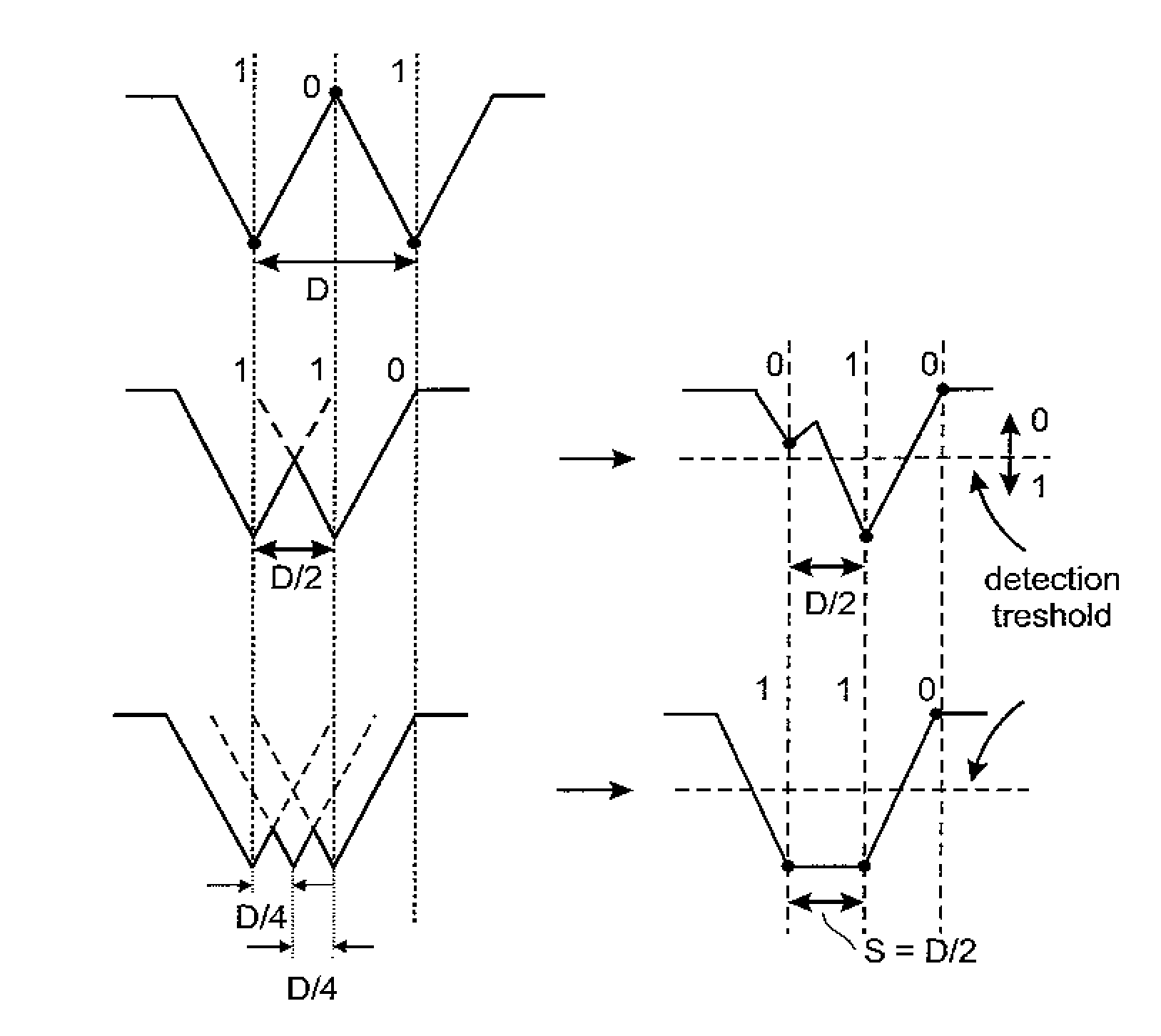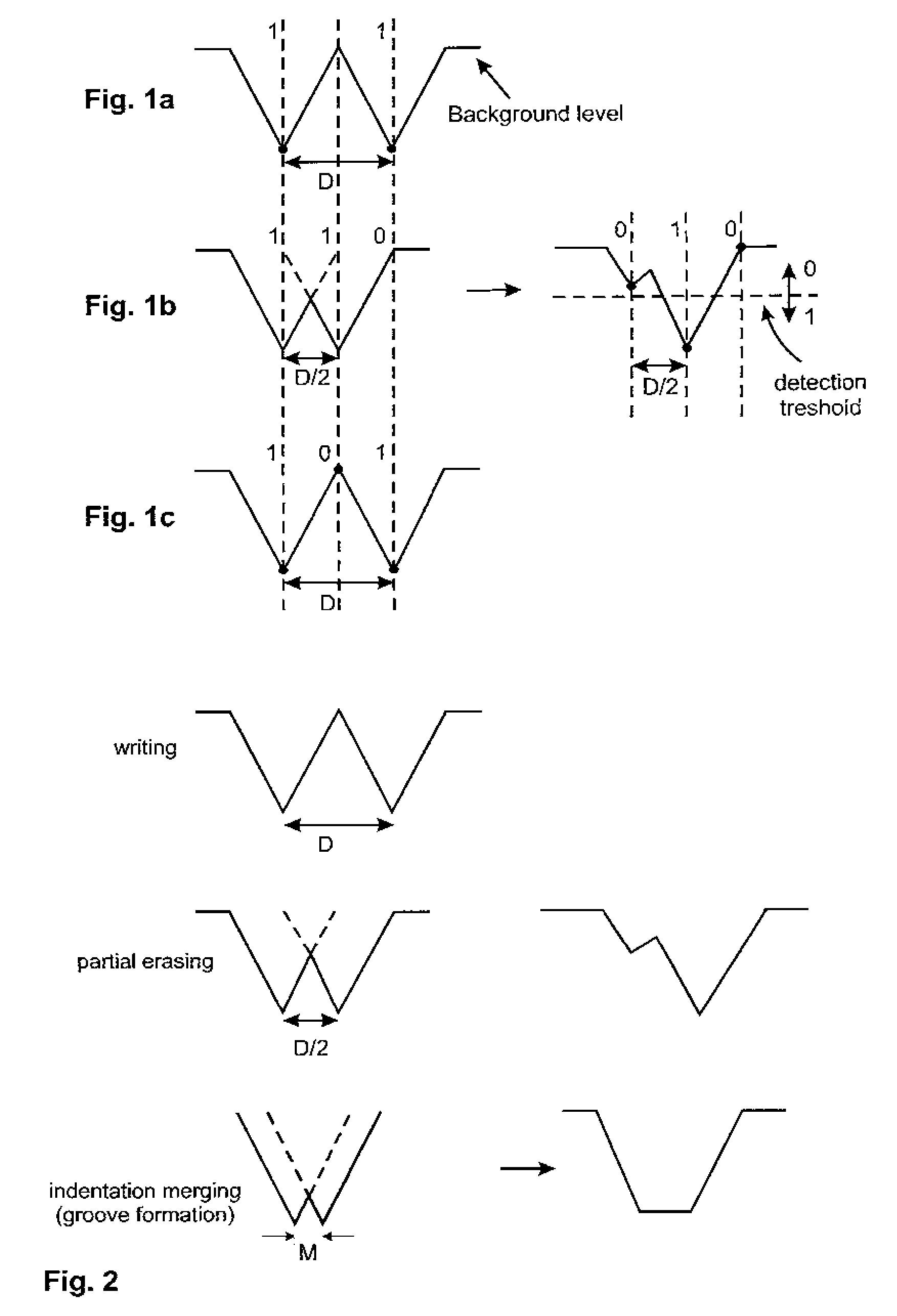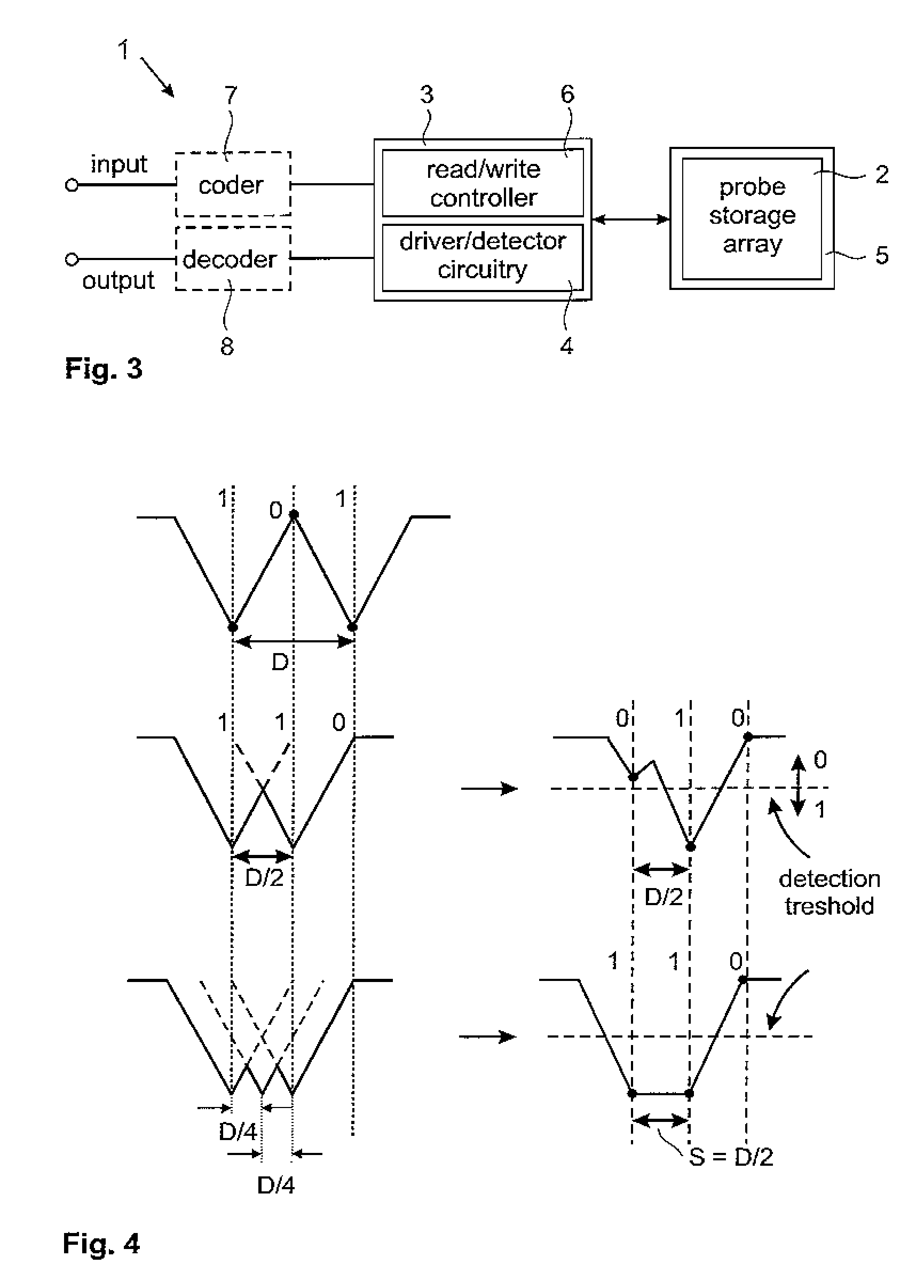Recording in probe-based data storage devices
a data storage device and probe technology, applied in the field of probe-based data storage devices, can solve the problems of detection errors, loss of performance, indentations starting to interact in a non-linear way, etc., and achieve the effects of reducing the number of write signals, avoiding partial erasure, and increasing storage density
- Summary
- Abstract
- Description
- Claims
- Application Information
AI Technical Summary
Benefits of technology
Problems solved by technology
Method used
Image
Examples
Embodiment Construction
[0036]Before describing operation of an embodiment of the present invention, the principle exploited therein will be explained with reference to FIG. 2. An embodiment of the present invention takes advantage of the fact that thermomechanically-written topographic indentations in polymer films merge into continuous grooves when they are closely spaced spatially. Three different regimes of topographic modification may be distinguished when the spatial distance between the indentations is reduced. In the first regime, where the distance between indentations is at least equal to the indentation interference threshold D, no interference between indentations occurs. This is illustrated in the top diagram in FIG. 2 for an indentation spacing of D. This is the regime in which data writing is typically performed as described earlier with reference to FIGS. 1a and 1c. As already explained, the extent to which the storage density may be increased depends on the threshold D. As soon as the spac...
PUM
| Property | Measurement | Unit |
|---|---|---|
| electrostatic voltage | aaaaa | aaaaa |
| length | aaaaa | aaaaa |
| distance | aaaaa | aaaaa |
Abstract
Description
Claims
Application Information
 Login to View More
Login to View More - R&D
- Intellectual Property
- Life Sciences
- Materials
- Tech Scout
- Unparalleled Data Quality
- Higher Quality Content
- 60% Fewer Hallucinations
Browse by: Latest US Patents, China's latest patents, Technical Efficacy Thesaurus, Application Domain, Technology Topic, Popular Technical Reports.
© 2025 PatSnap. All rights reserved.Legal|Privacy policy|Modern Slavery Act Transparency Statement|Sitemap|About US| Contact US: help@patsnap.com



